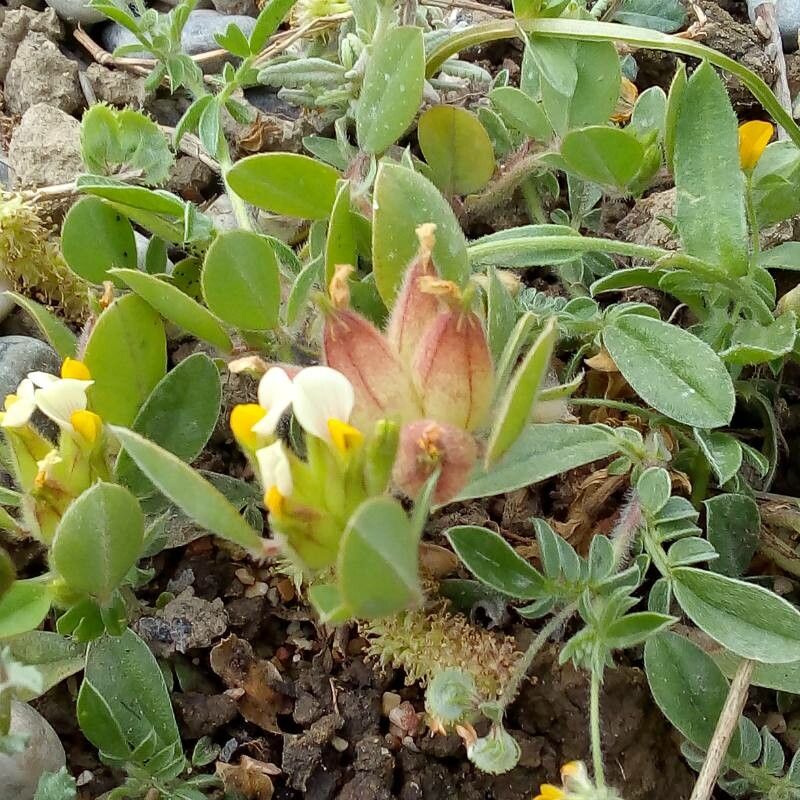Four-leaved Milk-vetch
tripodion tetraphyllum
Also known as: ["Four-leaved milk-vetch","Tripodion"]
Overview
A small, herbaceous plant in the legume family, known for its distinctive four-part leaves and yellow flowers.
Benefits & Perks
["fragrant flowers","wildlife attractant (bees, butterflies, birds)"]
Botanical Classification
| Phylum: | Magnoliophyta |
| Class: | Magnoliopsida |
| Order: | Fabales |
| Family: | Fabaceae |
| Genus: | Tripodion |
| Botanical Name: | Tripodion tetraphyllum |
Plant Characteristics
Basic Information
- Category: Flowers
- Suitable Location: rock gardens or sunny, open borders
- Suitable For:
- Is Weed: No
- Allergenicity: low
Environmental Needs
- Climate: {"temperatureRange":"10–30°C"}
- Hardiness: {"zones":"7–9"}
- Misting: rarely required
- Drainage: Fast-draining.
- Soil Type: Sandy, well-draining soil with some organic matter.
Maintenance Level
- Maintenance Level: moderate
- Toughness Level: moderate
- Pruning Frequency: As needed, typically after flowering or when dead foliage is present.
- Pruning Intensity: Light pruning.
Care Details
Ideal Sunlight Coverage:
Full sun (6–8 hours/day) with some protection from intense midday sun in summer.
Sunlight Tolerance Tips:
Acclimate gradually to intense sunlight; provide shade during peak summer heat; ensure good air circulation to prevent sunburn.
Care Requirements
Care Difficulty
moderatemoderate
Sunlight
full sun
Rotate plant weekly for even light; use sheer curtains in summer; avoid direct afternoon sun in hottest months.
Watering
every 7–10 days during active growth, reduce in winter
Water deeply but infrequently; ensure excellent drainage; avoid waterlogging.
Soil
well-draining, sandy loam
pH: Slightly alkaline to neutral (pH 7.0–7.5).
Ensure pots have drainage holes; avoid heavy clay soils; amend with grit if needed.
Temperature
Prefers warm to hot temperatures (20–30°C); tolerates mild frosts but thrives in warmth.
Avoid sudden temperature changes; protect from frost; ensure good air circulation in heat.
Fertilizing
every 4–6 weeks during growing season
Avoid fertilizing in winter; do not over-fertilize; apply to moist soil to prevent root burn.
Propagation
Methods
Seed or division of rhizomes.
Step-by-Step Propagation Guide
- Collect mature seeds or divide rhizomes.
- Sow seeds shallowly or plant divisions.
- Keep moist and warm.
Best Time: Spring, when the plant is actively growing.
Environment
Warm, bright, and humid with indirect light.
Medium
Well-draining seed starting mix or sandy loam for division.
Hormone
Not necessary for division; optional for seeds to improve germination.
Timeline
Seeds may take 1–3 months to germinate; division will establish in 1–2 months.
Tools Needed
Pruners, small pots, seed trays, rooting hormone (optional).
Quick Tips
Use fresh seeds for best germination; ensure divisions have healthy roots; maintain consistent moisture.
Pruning & Repotting
Pruning Guide
Method
Snip dead or yellowing leaves at the base; trim spent flower stalks.
Pruning Plan
Minimal pruning needed; remove dead or damaged foliage to maintain appearance and health.
Tools
Clean, sharp pruners or scissors.
Checklist
Sanitize tools; prune dead foliage; remove spent flowers; avoid cutting healthy growth.
Repotting Guide
Best Season
Spring, before the active growing season begins.
Pot Size
Choose a pot one size larger than the current one, with a diameter increase of 2–5 cm.
Method
Use a well-draining soil mix; gently tease out roots if compacted; ensure the new pot has drainage holes.
Suggestions
Repot every 2–3 years or when the plant becomes root-bound.
Checklist
Prepare new pot with drainage; gently remove plant; trim any damaged roots; replant at the same depth.
Advanced Care Tips
Watering Mastery
Watering Checklist
Check soil dryness; water deeply; ensure drainage; avoid wetting foliage.
How to Apply Water Properly
Water directly at the root zone until water drains from the bottom, ensuring even moisture without saturation. Water in the morning to allow foliage to dry before nightfall.
Watering Schedule Tips
Water sparingly, allowing soil to dry completely between waterings. Reduce watering significantly in winter to prevent root rot.
Soil Improvement
Add coarse sand or perlite to improve drainage; incorporate compost for fertility.
Temperature Stress Management
Signs of Temperature Issues
Wilting, leaf drop, or stunted growth in cold; scorching or leaf curl in excessive heat.
Cold Stress
Slows growth, may cause root damage, and can lead to fungal infections in damp cold conditions.
Solution: Move to a warmer location; insulate pots; reduce watering in cold periods.
Hot Stress
Can cause leaf scorch, dehydration, and reduced flowering if not provided with adequate water and shade.
Solution: Provide partial shade; increase humidity; water more frequently but avoid waterlogging.
Fertilizing Guide
Fertilizing Checklist
Use diluted fertilizer; apply during growing season; avoid winter feeding.
Fertilizing Method
Use a balanced, water-soluble fertilizer diluted to half strength every 4–6 weeks during active growth (spring and summer).
Common Problems & Solutions
Toxicity Warning
Cats
Slightly ToxicCats that consume Tripodion tetraphyllum may experience mild gastrointestinal issues. The plant poses a low risk to felines but ingestion should be avoided.
⚠️ Symptoms:
🌿 Toxic Parts:
⚡ Toxic If:
if eaten
Dogs
Slightly ToxicIngestion of Tripodion tetraphyllum by dogs may result in mild gastrointestinal upset. The plant is not considered highly toxic to canines but can cause discomfort.
⚠️ Symptoms:
🌿 Toxic Parts:
⚡ Toxic If:
if eaten
Humans
Slightly ToxicTripodion tetraphyllum contains compounds that can cause mild gastrointestinal distress upon ingestion. The plant's effects are generally not severe but can lead to discomfort in sensitive individuals.
⚠️ Symptoms:
🌿 Toxic Parts:
⚡ Toxic If:
if eaten
Frequently Asked Questions
Q: Is Tripodion tetraphyllum toxic to pets?
A: It is mildly toxic to dogs and cats.
Q: What are the typical care requirements for this plant?
A: It requires moderate care, including well-drained soil and full sun.
Q: Does this plant attract wildlife?
A: Yes, it attracts bees, butterflies, and birds due to its fragrant flowers.
Quick Reference
| Family: | Fabaceae |
| Care: | moderate |
| Light: | full sun |
| Water: | every 7–10 days during activ |
Get Expert Care Tips
Download the Plantious app for personalized care reminders and plant identification!
Google Play App Store








